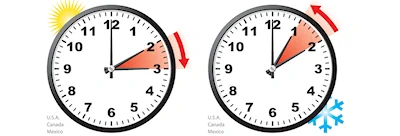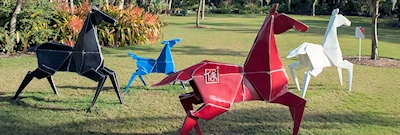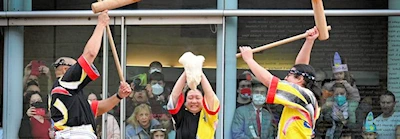Noguchi Tour (One of the Twentieth Century’s Most Important & Critically Acclaimed Sculptors) NEW
Long Island, NY 11106
Educator-led public tours are free with Museum admission and available daily at 2 pm. Tours are approximately one hour long and do not require a reservation, although visitors are accommodated on a first-come, first-served basis.
Tours are conversational and explore select works in the Museum’s collection and exhibitions while introducing the life and vision of Isamu Noguchi. In keeping with Noguchi’s interest in the visitor’s personal experience of the Museum, groups will be encouraged to share their observations and interpretations throughout the course of the tour. See Tours.
Noguchi Building, Galleries, Sculpture Garden..
Plan Your Visit
Wed-Sun: 11 am - 6 pm
Mon-Tue: Closed
Noguchi Calendar of Events
About Isamu Noguchi
Isamu Noguchi (1904-1988) was one of the twentieth century’s most important and critically acclaimed sculptors. Through a lifetime of artistic experimentation, he created sculptures, gardens, furniture and lighting designs, ceramics, architecture, landscapes, and set designs. His work, at once subtle and bold, traditional and modern, set a new standard for the reintegration of the arts.
Noguchi, an internationalist, traveled extensively throughout his life. (In his later years he maintained studios both in Japan and New York.) He discovered the impact of large-scale public works in Mexico, earthy ceramics and tranquil gardens in Japan, subtle ink-brush techniques in China, and the purity of marble in Italy. He incorporated all of these impressions into his work, which utilized a wide range of materials, including stainless steel, marble, cast iron, balsa wood, bronze, sheet aluminum, basalt, granite, and water.
When Noguchi’s mother Léonie Gilmour met his father, she was a young writer and editor living in New York City. Gilmour was a white American of mostly Irish descent born in Brooklyn. His father Yonejiro Noguchi, an itinerant Japanese poet, was Asian. Noguchi was born in Los Angeles, but moved to Japan with his mother at the age of two and lived there until the age of thirteen. In the summer of 1918, Noguchi returned alone to the United States to attend high school in Rolling Prairie and then La Porte, Indiana, adding yet another layer to an increasingly complex identity. (He proudly identified as a “Hoosier” for the rest of his life.)
After high school he moved to Connecticut to work briefly for the sculptor Gutzon Borglum, and then to New York City to attend Columbia University. While enrolled there as a premedical student, he also began taking evening sculpture classes on New York’s Lower East Side with the sculptor Onorio Ruotolo at the Leonardo da Vinci School of Art. He soon left the university to become an academic sculptor, supporting himself by making his first portrait busts.
In 1926, Noguchi saw an exhibition in New York of the work of Constantin Brancusi that profoundly changed his artistic direction. With a John Simon Guggenheim Fellowship, Noguchi went to Paris, and in 1927 worked in Brancusi’s studio. Inspired by the older artist’s forms and philosophy, Noguchi turned to modernism and abstraction, infusing his highly finished pieces with a lyrical and emotional expressiveness, and with an aura of mystery.
Returning to New York City as well as traveling extensively in Asia, Mexico, and Europe in the late 1920s through the 1930s, Noguchi survived on portrait sculpture and design commissions, proposed landscape works and playgrounds, and intersected and engaged in collaborations with a wide range of luminaries. Noguchi’s work was not well-known in the United States until 1940, when he completed a large-scale sculpture symbolizing the freedom of the press, which was commissioned in 1938 for the Associated Press Building in Rockefeller Center, New York City. This was the first of what would eventually become numerous celebrated public works worldwide, ranging from playgrounds to plazas, gardens to fountains, all reflecting his belief in the social significance of sculpture.
The Japanese attack on Pearl Harbor and the backlash against Japanese Americans in the United States had a dramatic personal effect on Noguchi, motivating him to become a political activist. In 1942, he cofounded Nisei Writers and Artists Mobilization for Democracy, a group dedicated to raising awareness of the patriotism of Japanese Americans; and voluntarily entered the Colorado River Relocation Center (Poston) concentration camp in Arizona where he remained for six months.
Following his release, Noguchi set up a studio at 33 MacDougal Alley in Greenwich Village, New York City, where he returned to stone sculpture as well as prolific explorations of new materials and methods. His ideas and feelings are reflected in his works of that period, particularly the delicate slab sculptures included in the 1946 exhibition Fourteen Americans at The Museum of Modern Art, New York.
Noguchi did not belong to any particular movement, but collaborated with artists working in a range of disciplines and schools. He created stage sets as early as 1935 for Martha Graham, beginning a lifelong collaboration; as well as for Merce Cunningham, Erick Hawkins, and George Balanchine and composer John Cage. In the 1960s, Noguchi began working with stone carver Masatoshi Izumi on the island of Shikoku, Japan; a collaboration that would also continue for the rest of his life. From 1961 to 1966, he worked on a playground design with the architect Louis Kahn.
Whenever given the opportunity to venture into the mass-production of his designs, Noguchi seized it. In 1937, he designed a Bakelite intercom for the Zenith Radio Corporation, and in 1947, his glass-topped table was produced by Herman Miller. This design and others-such as his designs for Akari light sculptures which were initially developed in 1951 using traditional Japanese materials-are still being produced today.
In 1985, Noguchi opened The Isamu Noguchi Garden Museum (now known as The Noguchi Museum), in Long Island City, New York. The Museum, established and designed by the artist, marked the culmination of his commitment to public spaces. Located in a 1920s industrial building across the street from where the artist had established a studio in 1960, it has a serene outdoor sculpture garden, and many galleries that display Noguchi’s work, along with photographs, drawings, and models from his career. He also indicated that his studio in Mure, Japan, be preserved to inspire artists and scholars; a wish that was fulfilled with the opening of the Isamu Noguchi Garden Museum Japan in 1999.
Noguchi’s first retrospective in the United States was in 1968, at the Whitney Museum of American Art in New York City. In 1986, he represented the United States at the Venice Biennale. Noguchi received the Edward MacDowell Medal for Outstanding Lifetime Contribution to the Arts in 1982; the Kyoto Prize in Arts in 1986; the National Medal of Arts in 1987; and the Order of the Sacred Treasure from the Japanese government in 1988. He died in New York City in 1988.
Disclaimer: Please double check all information provided on our platform with the official website for complete accuracy and up-to-date details.
Saturday, 6 December, 2025
Event Contact
Noguchi Tour (One of the Twentieth Century’s MosPhone: (718) 204-7088
Event Organizer Website
Visit Organizer Website
Get More Details From the Event Organizer
Event Location Website
Visit Location Website
For More Location Details
Event Information Can Change
Always verify event information for possible changes or mistakes.Contact Us for Issues

















